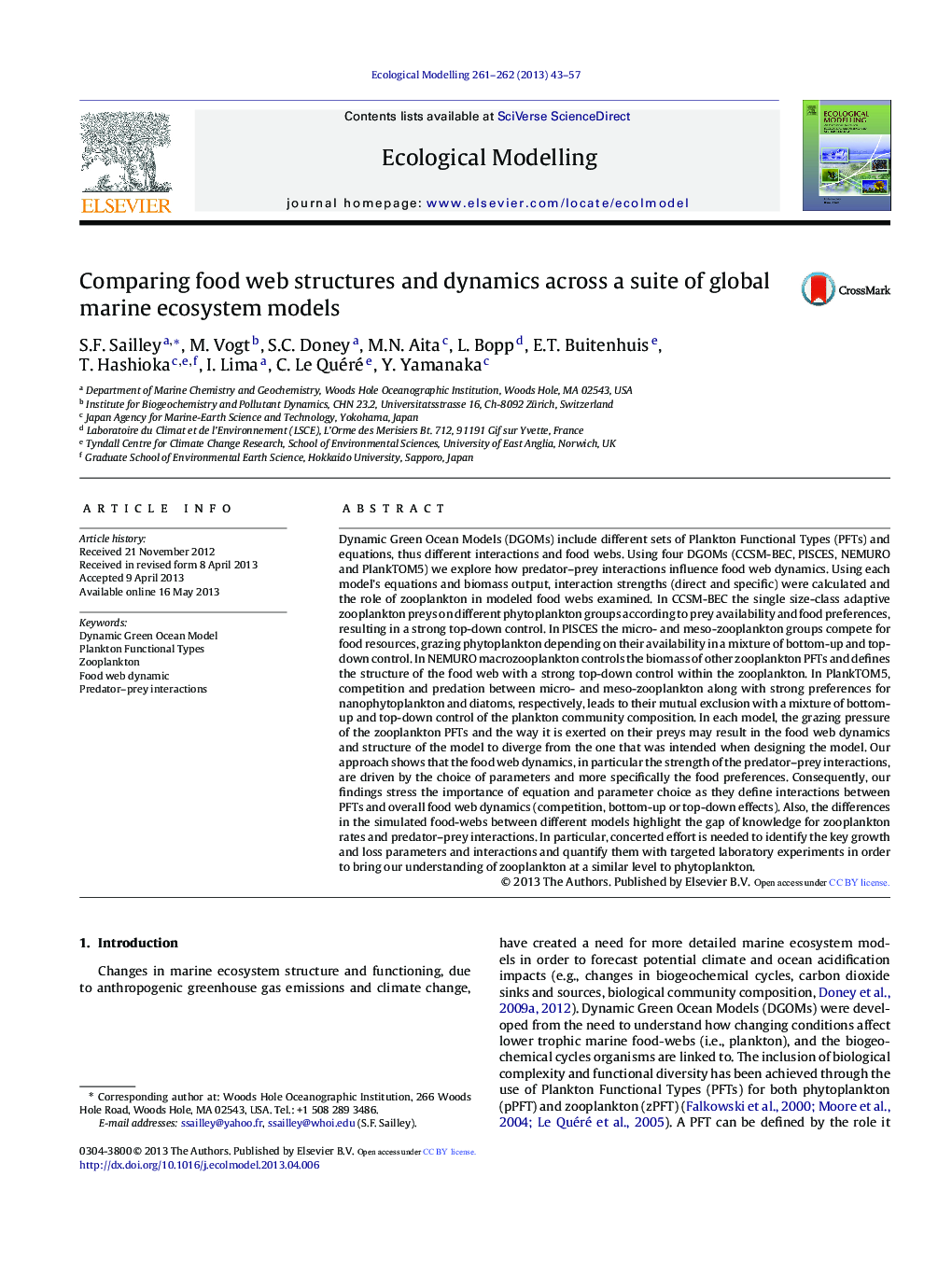| Article ID | Journal | Published Year | Pages | File Type |
|---|---|---|---|---|
| 6297147 | Ecological Modelling | 2013 | 15 Pages |
â¢Comparison of the zooplankton in four Dynamic Green Ocean Models.â¢Zooplankton role in defining the food web dynamics in ecosystem models.â¢Zooplankton food preferences influence the predator-prey relationship in models.â¢The food web dynamics in a model can vary from the dynamics expected from the conceptual food web.
Dynamic Green Ocean Models (DGOMs) include different sets of Plankton Functional Types (PFTs) and equations, thus different interactions and food webs. Using four DGOMs (CCSM-BEC, PISCES, NEMURO and PlankTOM5) we explore how predator-prey interactions influence food web dynamics. Using each model's equations and biomass output, interaction strengths (direct and specific) were calculated and the role of zooplankton in modeled food webs examined. In CCSM-BEC the single size-class adaptive zooplankton preys on different phytoplankton groups according to prey availability and food preferences, resulting in a strong top-down control. In PISCES the micro- and meso-zooplankton groups compete for food resources, grazing phytoplankton depending on their availability in a mixture of bottom-up and top-down control. In NEMURO macrozooplankton controls the biomass of other zooplankton PFTs and defines the structure of the food web with a strong top-down control within the zooplankton. In PlankTOM5, competition and predation between micro- and meso-zooplankton along with strong preferences for nanophytoplankton and diatoms, respectively, leads to their mutual exclusion with a mixture of bottom-up and top-down control of the plankton community composition. In each model, the grazing pressure of the zooplankton PFTs and the way it is exerted on their preys may result in the food web dynamics and structure of the model to diverge from the one that was intended when designing the model. Our approach shows that the food web dynamics, in particular the strength of the predator-prey interactions, are driven by the choice of parameters and more specifically the food preferences. Consequently, our findings stress the importance of equation and parameter choice as they define interactions between PFTs and overall food web dynamics (competition, bottom-up or top-down effects). Also, the differences in the simulated food-webs between different models highlight the gap of knowledge for zooplankton rates and predator-prey interactions. In particular, concerted effort is needed to identify the key growth and loss parameters and interactions and quantify them with targeted laboratory experiments in order to bring our understanding of zooplankton at a similar level to phytoplankton.
